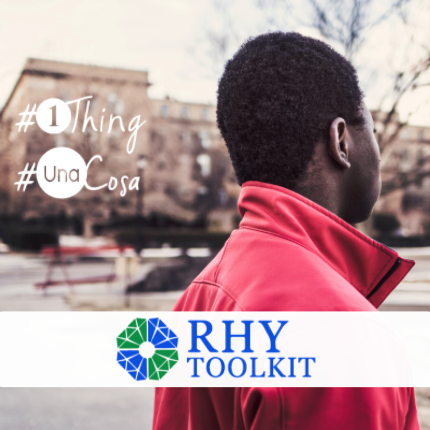By Arlene Snyder, Director of Program Development at Bridge Over Troubled Waters
“If I didn’t have Bridge, I would be couch surfing or sleeping outside. At Bridge, everyone knows who I am.” – Malcolm*
No one knows for sure how many unaccompanied homeless youth and young adults (YYA) there are in the US. The National Network for Youth, an advocacy organization working to coordinate and support services for these vulnerable young people, provides a range of estimates on its website.
- The National Network estimates that 4.2 million YYA experience homelessness in the US on any given night, and 700,000 of them are minors.
- The 2019 Point in Time (PIT) count conducted by the US Department of Housing and Urban Development estimated 42,593 homeless youth in one day.
- The Department of Education estimates there are about 90,000 homeless youth in the country’s public schools.
Voices of Youth Count – one of the most comprehensive attempts to find an accurate estimate of the numbers of youth experiencing homelessness – found that one in 10 young adults ages 18 to 25 (3.5 million) and one in 30 young people ages 13 to 17 (700,000) experienced a form of homelessness over the 12-month survey period.
- This national survey also shows that particular subpopulations are at higher risk for homelessness, including Black and Hispanic youth; lesbian, gay, bisexual and transgender youth (LGBT); youth who do not complete high school; and youth who are parents.
- Among racial and ethnic groups, African American youth were especially overrepresented, with an 83% higher risk of having experienced homelessness over youth of other races.
“Disproportionality of homelessness experiences among black youth mirrors racial disparities documented elsewhere, for example in school suspensions, incarceration, and foster care placement” (Morton, Dworsky & Samuels, 2017).
These youth and young adults are a hidden population. They blend in with youth in general and rarely fit the stereotypical profile of homelessness. The US Interagency Council on Homelessness notes that “point in time” counts and surveys almost always underestimate numbers for youth, as many “double up,” or “live in. . . cars, abandoned buildings, hotels or motels.” At Bridge Over Troubled Water in Boston, which serves about 2,500 youth each year, between 70% and 80% of clients are assessed with trauma experiences or post-traumatic stress disorder (PTSD). They experience panic attacks, anxiety, impulsivity, anger issues, depression, and dissociation. A recent survey of Bridge clients at intake found:
- Over the past year, 82% reported witnessing or experiencing domestic violence
- 88% reported experiencing abuse (verbal/emotional, physical and/or sexual) as a child
- 76% reported being in a physical fight, 71% had been robbed, and 76% had been threatened
- Over the past month, 27% were treated at an emergency room
- Over the past year, 94% used marijuana, 94% used alcohol, and 76% used cigarettes
- 24% engaged in injection drug use, 29% used heroin, 24% used crack cocaine, 18% used meth, 41% used K2, and 65% abused prescription drugs
- Over the past year, 47% traded sex for money, food, or a place to stay
Certainly for youth, housing instability has causes beyond poverty and lack of affordable housing, such as violence, lack of social support, substance abuse, or physical and sexual abuse in the family. The National Coalition of the Homeless notes young people also experience causes such as homophobia and transphobia, history in a racist and inequitable juvenile justice system, inadequate resources for mental health issues, and aging out of foster care. Often youth homelessness can be traced to family breakdown, structures that perpetuate oppression or systems failure in child welfare, juvenile justice, education, or mental health systems. According to the Voices of Youth Count survey, up to 40% of foster care youth experience homelessness. At Bridge, data indicates 50% of youth in its drop-in center and counseling aged out of the foster care, mental health or juvenile justice systems.
Bridge was founded 50 years ago by nuns and teachers, who were among the first to recognize youth homelessness, a phenomenon which was growing into a national issue. They were on the forefront of a national movement to develop innovative programs and practices to reach the most vulnerable, high-risk youth and provide the age-appropriate continuum of care that could enable them to transform their lives and grow into fulfilled, self-sufficient adulthood. With other pioneering researchers and practitioners, they developed creative techniques to build trust and engage youth in addressing problems and barriers which prevented them from moving forward in their lives.
Most programs for homeless YYA, like Bridge, base their services on the belief that young people surrounded by opportunities for positive encounters engage in less risky behavior and show higher rates of successful transition to adulthood. Based on that premise, effective services for these young people include an array of strategies offering social support and relationship-building. At Bridge, these services begin on the streets, and continue to youth-only emergency shelter, transitional and permanent housing options, and community reintegration. The key theories of change that inform effective services for homeless YYA include positive youth development (PYD) and trauma-informed care (TIC) and promote the following best-practice service approaches:
- Outreach to youth on their own turf
- Non-threatening assessments and immediate access to services
- Youth participation and leadership in setting achievable short-term goals and timelines for completion
- Emphasis on achievable short-term goals
- On-going assessment and follow-up so youth recognize progress and can set new goals
- A safe welcoming environment for youth of all races, ethnicities, and sexual orientations
- Neutral language and non-judgmental methods to avoid triggers that can cause youth to relive traumatic experiences
- Prioritized response to immediate needs and gateway services such as distributing food, clean socks, backpacks, and hygiene products with no strings attached
- Time to gain trust since youth may not readily disclose traumatic experiences until relationship is formed
- Celebration of strengths and talents, rather than focus on problems and deficits
- Access to services at youths’ own pace, so as not to take away their sense of control
- Inclusive language, multiple learning approaches and paths to skill-building, respecting individual capacities and learning styles
- Interactions and treatment plans tailored to individual needs
- Recognition of co-occurring disorders and other mental health problems before skill-building, education, and job readiness services can succeed
- Recognition that change is slow and young people may take many small steps instead of one large one
With these strategies, Bridge and other successful agencies help homeless youth to understand they are not to blame for abuse or neglect they experienced, and recognize they have strength and capacity to shape their futures.
“My Bridge counselor makes me feel comfortable and is a great help to me when I’m having a problem.” – Bryanna*
For more information:
Bridge Over Troubled Waters provides effective and innovative services to runaway, homeless and high-risk youth, helps youth avoid a lifetime of dependency on social services, guides youth towards self-sufficiency, and enables youth to transform their lives and build fulfilling, meaningful futures.
Covenant House has helped transform and save the lives of more than a million homeless, runaway and trafficked young people for more than four decades. They offer housing and support services to young people in need – currently reaching 74,000 youth every year.
The National Network for Youth (NN4Y) has been a public education and policy advocacy organization dedicated to the prevention and eradication of youth homelessness in America for over 40 years. As the largest and most diverse network of its kind, NN4Y mobilizes over 300 members and affiliates –organizations that work on the front lines every day to provide prevention services and respond to runaways and youth experiencing homelessness and human trafficking.
National Runaway Safeline (NRS) is the federally designated national communication system for runaway and homeless youth. Youth and family members connect to the 1-800-RUNAWAY hotline or 1800RUNAWAY.org online crisis services to work through problems and find local help from social service agencies and organizations. Some individuals just need someone to talk to, others need help finding a shelter, food, medical assistance, or counseling. Some youth are on the streets. Others are struggling with issues at home. And NRS is here to listen, here to help 24/7/365.
Teen Dating Violence Awareness & Prevention Month (TDVAM) 2021
 In observance of Teen Dating Violence Awareness & Prevention Month (TDVAM) 2021, the National Resource Center on Domestic Violence (NRCDV) is sponsoring several engagement opportunities highlighting the work of organizations that center young people and youth-driven initiatives, with a specific focus on the voices and experiences of Black, Indigenous and Trans-identified youth facing homelessness and housing instability.
In observance of Teen Dating Violence Awareness & Prevention Month (TDVAM) 2021, the National Resource Center on Domestic Violence (NRCDV) is sponsoring several engagement opportunities highlighting the work of organizations that center young people and youth-driven initiatives, with a specific focus on the voices and experiences of Black, Indigenous and Trans-identified youth facing homelessness and housing instability.
- Runaway & Homeless Youth and Relationship Violence Toolkit
- Awareness Highlights Blog: Centering Youth at the Intersections of Homelessness and Gender-Based Violence for Teen DV Month 2021
- Webinar: Not Neutral: Mandatory Reporting on Domestic Violence Survivors on Tuesday, February 16 at 3:00 pm ET/ 2:00 pm CT/ 12:00pm PT
- Webinar: Meaningful Partnerships to Support Youth at the Intersections of Homelessness and Gender-Based Violence on Tuesday, February 23 at 2:00 pm ET/ 1:00 pm CT/ 11:00am PT
*Name has been changed to protect survivor's privacy.















